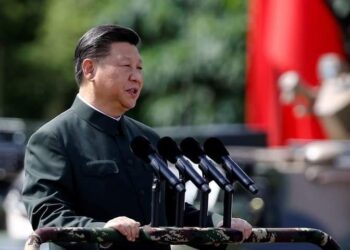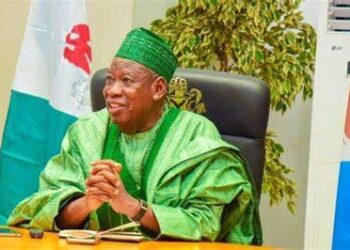Last month, the State Council Information Office of the People’s Republic of China published a white paper outlining Beijing’s proposal and actions in regards to the construction of a community shared future for mankind. The vision for a community of shared future was first presented by the Chinese leader, President Xi Jinping during a speech at the Moscow State Institute of International Relations of the Russian federation in 2013. And since it was unveiled, it has been steadily enriched and global dialogue and enthusiasm around it has grown phenomenally.
From the rigorous exertions to understand the evolving trends and historical trajectories of the contemporary world, the Communist Party of China (CPC) generates prospective outlooks that engage the specific need of the times. To understand the evolving and developing trends is crucial, but to assemble the necessary and existential tools to shape it, in the directions that maximizes its benefits while reducing to the barest minimum it,s adverse effects is more facilitative and conducive to the well-being of the entire humanity.
The proposal and vision of the community of shared future derives from acute and rigorous interrogations of the current state of mankind and its prospective objective outcomes of either to prosper together or be dammed together. It is obvious fact that “in the universe, there is one earth, the shared home of humanity”.
The pathway to integrated global order illuminated by the unprecedented breakthrough in information and communication technology has made for epic transitions from the previous fragmented and isolated world. While there been copious study of international system both in its various parts and the whole, the mechanics and process to undertake practical it’s consequential challenges and align its outcomes to the well-being of humanity has been in clear deficit. The community of shared future is a holistic theoretical approach that methodically deconstruct the patterns of emerging global trends, clearly delineated its tapestries but more importantly engages the practical tools to respond to question it raises .
A major Chinese wisdom in contributing to the questions of the times about the future of humanity, the vision of a community of shared future for mankind, set the tasks to basically provoke new thinking across the world about the challenges of the new era. As the white paper noted “as information technology advances with every passing day, most prominently in the fields of internet, big data, quantum computing, and artificial intelligence, human exchanges have become deeper, broader and more extensive than even before and countries are more bound together in several fronts of the human endeavours.
Despite the obvious ground for cooperation, the current international order is fraught with several challenges. Some countries still hold on to the outdated views of their exceptionalism and desperately stand in the way of the emerging multi-polar world order. But multi-polarism by the historical reality of diversity of human civilization is the basic feature of our world. Different histories, national conditions, ethnic group and customs have given birth to diverse civilizations and mutual learning among civilizations provide important impetus to human progress. In its century long history, the Communist Party of China has consistently championed a global vision grounded in the rigorous engagement with reality without loosing focus to the specific national condition of China.
The CPC richly accumulated experience has taught it to understand that the fate of China is intrinsically linked to the world and to strive for a prosperous China is to also bring opportunities to the world and strive for global prosperity. The vision of community shared future for humanity has not been an empty political rhetoric. Because it is a vision derived from materialistic conception history, its trajectories would be essentially driven by creating the material condition for its realization.
And to this end, China is exerting herself and generating the global partnership necessary to travel down the journey of inclusive global order. Since the past ten years, China has proposed and developed a global framework to building a community of shared future through the partnership of the Belt and Road Initiative, (BRI) which have generated the world’s most extensive public goods. Though, Belt and Road initiative originated in China, its opportunities and achievements clearly belongs to the world. Two-thirds or more than 150 countries are already partners in the Belt and Road construction and a world bank report recently noted that when fully implemented, intra-BRI trade will increase by 4.1 %.
The Asia Infrastructure Investment Bank (AIIB) and Silk ROAD Fund have been set up, providing financing support for hundreds of projects. People to people connectivity continues to strengthen. Roads, bridges and development belts that lead to a happier and better life are constantly emerging in participating countries. Such life changing as building wells, cultivating hybrid rice and other small projects that work faster in improving people’s lives are giving local people of BRI countries a stronger sense of gain and fulfilment.
For example, the Malawi’s 600 wells built with Chinese assistance under the framework of the BRI cooperation, known as ‘wells of happiness” is serving 150,000 local residents. The Mombasa-Nairobi railway which has added more than 2% to local economic growth in Kenya or Nigeria’s first deep sea port, the Lekki deep seaport, the airport upgrades and renovation along with expanding rail network in Nigeria bring to vivid life, the impact of the Belt and Road cooperation as a practical tool to navigate to the community of shared future for humanity.
The vision for a community of shared future is a clarion call to every part of the world to rise to the challenge of contributing meaningfully and constructively to the shared destiny of mankind, s common future. It is the practical interpretation of globalisation in the new era and represent a humanization of the process that puts the well beings of all peoples first above profit.
The white paper which Chinese has released on the directions and prospects of the global community of shared future deserve attention and study because it poses the most existential question for the future and must be harnessed and enriched by the varied wisdom of mankind different civilisation. Africa and Nigeria in particular should play pivotal roles in advancing the road map to the global vision of shared future for humanity.
Onunaiju, research Director, Centre for China Studies, Abuja, Nigeria




